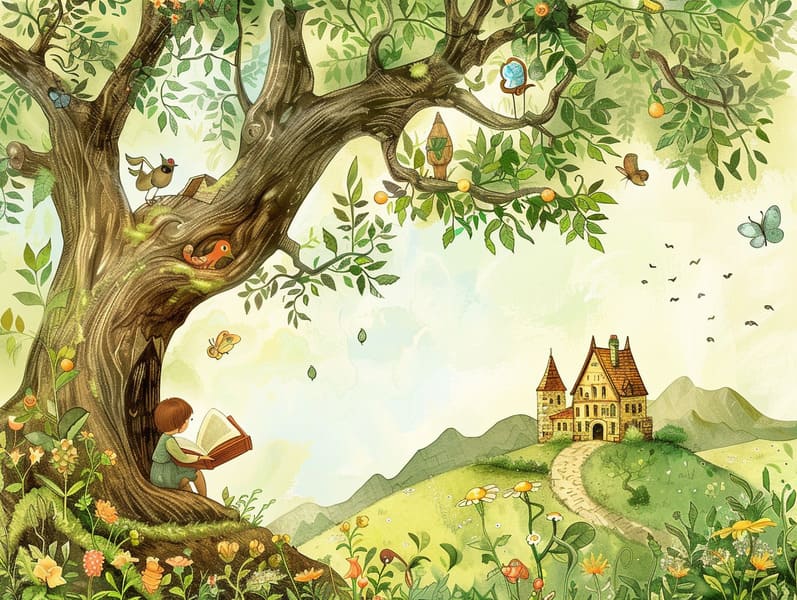Tracing the Heritage of Mythical Fairy Tales with Their Lasting Loveliness.
Tracing the Heritage of Mythical Fairy Tales with Their Lasting Loveliness.
Blog Article

Traditional fairy tales have enduring presence. These stories have been shared from one generation to the next far before they were ever transcribed. They arose from a variety of societies, including Indigenous traditions. They were initially shared among elders, often carrying themes and messages concerning the societal norms and beliefs of the time.
The Grimm brothers, Jacob and Wilhelm (the Grimm brothers), were among the first to compile and publish many of these beloved fairy tales. Their published works, "Grimm's Story Collection," included narratives like "Cinderella," "The Story of Hansel and Gretel," and "Snow White," which have since become cornerstones in the world of classic fairy tales. Similarly, Hans Christian Andersen's charming stories, such as "The Little Mermaid," and "The Ugly Duckling," have captivated hearts worldwide, guaranteeing their place in the pantheon of beloved fairy tales.
Though they are old, these stories remain as pertinent as ever, especially as kids' bedtime tales. These magical stories are now available in diverse formats, including gorgeously illustrated books, enchanting animations, and online storybooks.
Their persistent charm can be ascribed to several fascinating points:
Moral Lessons: Classic fairy tales often whisper important moral lessons. Stories like "The Shepherd Boy and the Wolf" teach the significance of being truthful, while "The Hare and the Tortoise" point out the benefits of resolve and unpretentiousness. These tales offer children clear distinctions between right and wrong, shaping their moral compass in a tender yet lasting way.
Compassion and Knowledge: Ancient fairy tales frequently portray characters facing difficulties and adversities, provoking readers to understand with their struggles and encourage their triumphs. For instance, "Beauty and the Beast" emphasizes the virtue of looking deeper to realize the real character of a soul, developing warmth and understanding.
Cultural Appreciation: Many classic fairy tales are steeped in the cultural contexts from which they grew. Engaging with these narratives can provide captivating looks into different social structures, cultivating a sense of cultural appreciation and understanding.
Imagination and Innovation: The fanciful elements in timeless fairy tales—talking animals—revitalize children’s dreams. These narratives lead readers to enchanted realms, kindling creative ideas and a sense of astonishment that remains a lifetime.
Ancient fairy tales are not only whimsical but also enlightening. They work as charming tools in cultivating various mental and emotional abilities in the young. When classic fairy tales are told out loud, they improve linguistic abilities by showing new language items and complicated sentence structures. This practice also fosters hearing perception and concentration, as children focus on check here every detail, looking forward to see what happens next.
Furthermore, reflecting on the themes and characters of timeless fairy tales can cultivate critical thinking and cognitive skills. Young readers are guided to notice patterns, foresee events, and grasp cause and effect. These conversations also support young ones utter their thoughts and feelings, promoting their emotional intelligence.
In today’s information age, the abundance of online storybooks has made these fairy tales more acquirable than ever. Internet resources and online apps give broad selections of ancient fairy tales that can be browsed or listened to anytime, anywhere. Fairy tales spoken are particularly popular, supplying an charming way for the young to engage with these mesmerizing stories. Sound books and read-to-me videos bring characters and settings to life, often joined by magical sound effects and soundtracks that augment the narrative adventure.
The timeless fascination of timeless fairy tales lies in their ability to modify to new eras while sustaining their central values. Contemporary adaptations of these stories often showcase more different figures and modern settings, making them accessible to today’s audience. However, the essential messages of valor, humanity, and rightness remain unchanged, continuing to reach readers of all ages.
Traditional fairy tales also offer a sense of serenity and recognition. They disclose a neat narrative with a straightforward beginning, middle, and end, often coming to a close with the wrap-up of conflicts and the triumph of virtue over vice. This certainty can be encouraging for young readers, allowing a sense of unchangeability in an dynamic world.
Classic fairy tales continue to enchant and edify new generations, maintaining their allure and value in modern society. As kids' bedtime tales, they present to a perfect blend of charm and enlightenment, supporting moral values, empathy, and creativity. The existence of online fairy tales and the well-received status of fairy tales narrated promise that these traditional tales remain acquirable to new generations.
By guarding and broadcasting these tales, we continue to appreciate the rich tapestry of inventiveness and cultural heritage. Whether you are enjoying a vibrantly illustrated book, browsing a electronic library, or listening to an read-aloud story, the charm of bedtime fairy tales is always within reach. These tales show us of the unfading impact of storytelling and its ability to hold us together across centuries and lands.
If you are reading a richly illustrated book, browsing a internet library, or listening on an narrated book, the loveliness of ancient fairy tales is always within reach.
These stories emphasize of the steadfast ability of storytelling and its ability to unite us across eras and regions, forming a connection that captivates and teaches alike.